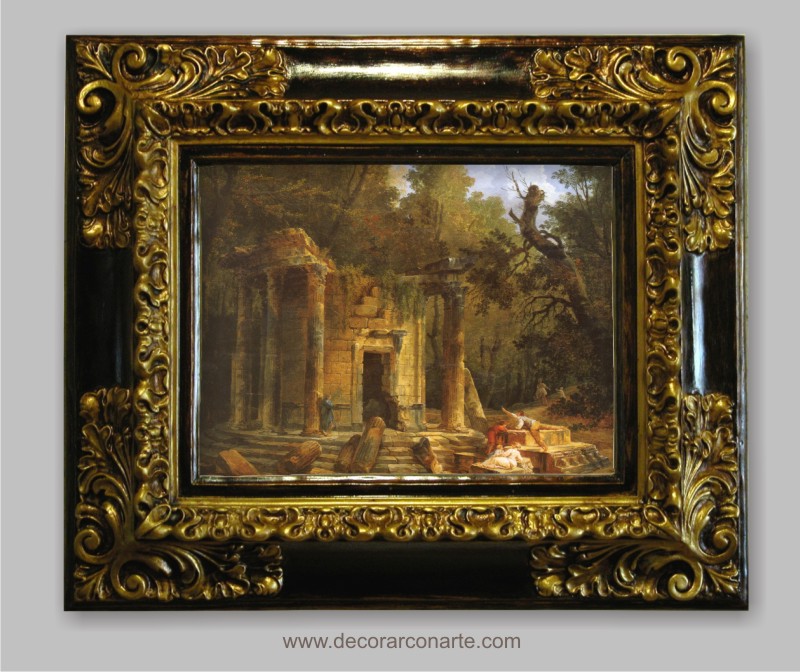Hubert Robert can be described as multifaceted.
One of his fields of specialisation was garden design.
In short: he was involved in the design of the park now called “Parc Jean-Jacques Rousseau”, located in Ermenonville (France). This garden got its name because the philosopher stayed there during the last weeks of his life and was originally supposed to be buried there.
The name of this painting is “The Temple of Philosophy in Ermenonville”.
This painting represents a temple designed by Hubert Robert himself as part of the construction of the park and called “Temple of Modern Philosophy”.
It is dedicated to Michel de Montaigne, and the six Tuscan columns represent six men who were useful to humanity through their writings or discoveries. They are Isaac Newton (for his discoveries), René Descartes (for his theories), Voltaire (for his fight against prejudice and superstition), William Penn (for his action in the creation of Pennsylvania), Montesquieu (for his defence of justice) and Jean-Jacques Rousseau (for his celebration of nature).
The temple is a reminder that modern philosophy has taught man to think for himself, enabling him to adopt critical stances and make new discoveries.
The choice of a temple to celebrate the merits of the great thinkers is based on the fact that ancient wisdom was updated during the Enlightenment and formed the basis for new work.
The building remains deliberately unfinished to symbolise that philosophy had not yet done all its work (and that the supposed ancient happiness was far from being achieved, as the Enlightenment idealised Antiquity). The columns on the ground, not far from the temple, are intended to underline this message.
So the “painter of ruins” has not painted any remains here. As you are no doubt aware, Hubert Robert painted a plethora of ruins of famous monuments and, in my humble opinion, many surpass “The Temple of Philosophy at Ermenonville”, both the painting and the monument itself.
Benoit Salomone

